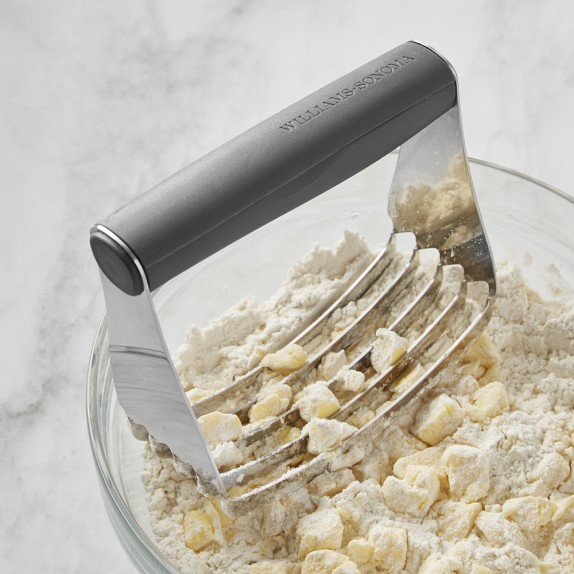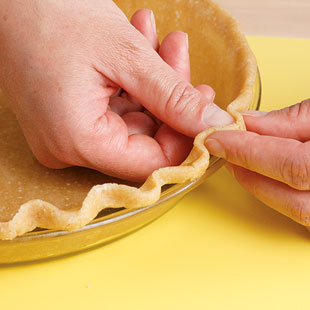How to Make Pastry for a One Crust Pie

1 cup sifted enriched flour
1/2 tsp salt
1/3 cup shortening (or lard)
2-3 tbsp ice water

Mix and sift flour and salt. Cut in shortening with a pastry blender. Sprinkle with cold water. Gather dough together and press firmly into a ball. Roll out into a circle 1" larger than pan, all around. Fit loosely into pan. Avoid stretching to prevent shrinkage.
Let pastry rest a few minutes then fold extra pastry back and under and build up a high fluted edge even with the pan rim.

Prick bottom of unfilled shell with fork to keep pastry from puffing up and warping during baking. Bake in very hot oven 450F until delicately browned, 12-15 minutes. After 5 minutes of baking look at pastry shell and quickly collapse any bubbles by pricking.
Cool pastry shell in the pan on a cake rack away from any draft before adding filling.
If filling and pastry are baked together do not prick the crust. Bake according to recipe directions for the pie.
Comments
Post a Comment